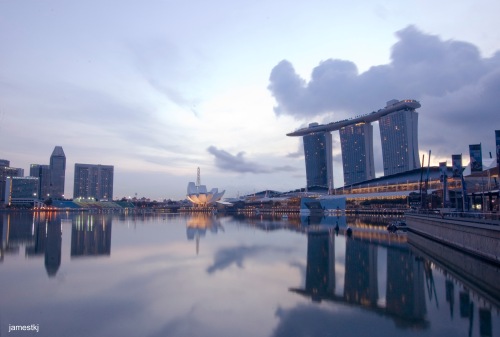 Communications can be in many aspects, eg interpersonal, cultural, corporate, organisational. etc. Since this week’s lecture is on group communications, i have decided to write a short entry about communications in groups aka group comms.
Communications can be in many aspects, eg interpersonal, cultural, corporate, organisational. etc. Since this week’s lecture is on group communications, i have decided to write a short entry about communications in groups aka group comms.
A group comes together mainly to tackle problems or perhaps to get tasks done. Why form a group to solve a problem? Why can’t it be done alone individually? The reason is mainly because being in a group has more benefits than doing it alone. Firstly, when you are in a group, there’ is group synergy, more inputs are being generated compared to the amount of inputs generated by an individual. Secondly in groups that are cohesive, they lend support and meet each member’s interpersonal needs. In addition, the amount of workload can be divided equally among the members as well.
As a group, it is no doubt important that both individual needs as well as group needs are met. There is a pressure when it comes to balancing both individual and group needs. For example some of them would be to recognize that full membership of the member comes with time, acquiring idiosyncrasy credit by conforming, recognizing written and unwritten norms that govern each level of membership and finally recognizing the legitimacy of individual and group goals.
As such, effective group interactions are necessary to tackle such problems. Every member must be able to take up both task and maintenance roles. Task roles simply mean adopting behaviors that will help the group to accompish its task efficiently and on time. Maintenance roles simply mean having the behaviors that will enhence the social climate of the group, in a sense promoting and encouraging cohesiveness within the group. Some examples of the task roles would be “Initiator”, “Information Seeker” etc. “Encourager”, “Harmoniser” are examples of the maintenace roles.
Another problem that would probably be faced by most groups is something known as “Groupthink“. Communications theorist, Irving Jarivs gave his definition of what groupthink is.
“Groupthink is a mode of thinking people engage in when they are deeply involved in a cohesive in-group, when memebers’ strving for unanimity override their motivation to realistically appraise alternative courses of action”
The most common reason for groupthink would be the members being unanimous in their thinking and decisions -makings that they neglect alternatives which could be better than what they have in mind. Some other symptoms of groupthink would be the group has the illusion of invulnerability, the members believing in the group’s own morality, members assert pressure on other members who dissent. etc
Therefore grouplink is something that will would compromise the efficiency and output generated by the group, thus it is important to eliminate it. To deal with groupthink, a group should appoint a devil’s advocate should any illusion of unanimity surfaces in the group. The group should also pay attention and be open to alternatives as well. In addition the members should monitor the behavior of the group and look out for any symptoms of grouplink. It is always beneifical to idenify the symptoms early and cut off grouplink before it compromises the group.
Lastly, a group will go through developmental stages. These stages will simply reflect on which phrase the group is in, from the stage of idenifying the task all the way till the stage of completing the task. There are there models of group development out but they do share some similarities in the stages. Out of all the three models, they do touch on the stages of “Identifying task”, “Relationship between members in the group” and of course “Getting the task done”.
In closing, effective group communications is cruial for a group to function at its utmost efficiency. Individual and group needs should not be overlooked as well. Having effective group interactions will not only help solve problems but also to build cohesiveness in the group.




 Web 2.0 can be deemed as the next big thing in the internet world. What exactly is web 2.0? The term “Web 2.0” refers to a perceived second generation of web development and design, that aims to facilitate communications, secure information sharing, interoperatbility and collaboration on the internet.
Web 2.0 can be deemed as the next big thing in the internet world. What exactly is web 2.0? The term “Web 2.0” refers to a perceived second generation of web development and design, that aims to facilitate communications, secure information sharing, interoperatbility and collaboration on the internet. I had my own share of cultural differences back in 2004 when i embarked on a cultural exchange programme with a group of university students to a rural part of China. The way of living the Chinese people have over there are totally different from what I am experiencing in Singapore. Naturally it did take a couple of days to adjust to their way of living.
I had my own share of cultural differences back in 2004 when i embarked on a cultural exchange programme with a group of university students to a rural part of China. The way of living the Chinese people have over there are totally different from what I am experiencing in Singapore. Naturally it did take a couple of days to adjust to their way of living. Communications can be in many aspects, eg interpersonal, cultural, corporate, organisational. etc. Since this week’s lecture is on group communications, i have decided to write a short entry about communications in groups aka group comms.
Communications can be in many aspects, eg interpersonal, cultural, corporate, organisational. etc. Since this week’s lecture is on group communications, i have decided to write a short entry about communications in groups aka group comms.